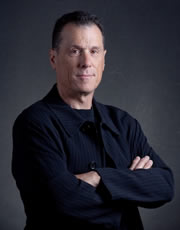 There is an exhibition in New York at the moment that caught my attention. I did not have the opportunity to see it, but the very idea of Taryn Simon’s An Occupation of Loss at the Park Avenue Armory struck me as both timely and deeply rooted in a particular sort of contemporary witnessing. I have been following Ms. Simon’s work for a while; it is the product of long and arduous research that often manifests in a gesture, a photograph, an object or a performative image that is not larger than the idea that preceded it. By that I mean the outcome of the work is not intended to attract more attention to itself that the idea of the work. It is all of a piece. What I find compelling about her work is that I cannot sense where the thinking stops and the making begins. While not generally framed as a “conceptual artist” Ms. Simon is certainly the inheritor of the legacy of conceptualism as are many artists working in spaces that are idea-driven; spaces in which materiality and or form are in relation to a larger story or narrative about art itself. This discourse is eternal and since mid-twentieth century at least, has occupied a great deal of thinking in the Western Art World.
There is an exhibition in New York at the moment that caught my attention. I did not have the opportunity to see it, but the very idea of Taryn Simon’s An Occupation of Loss at the Park Avenue Armory struck me as both timely and deeply rooted in a particular sort of contemporary witnessing. I have been following Ms. Simon’s work for a while; it is the product of long and arduous research that often manifests in a gesture, a photograph, an object or a performative image that is not larger than the idea that preceded it. By that I mean the outcome of the work is not intended to attract more attention to itself that the idea of the work. It is all of a piece. What I find compelling about her work is that I cannot sense where the thinking stops and the making begins. While not generally framed as a “conceptual artist” Ms. Simon is certainly the inheritor of the legacy of conceptualism as are many artists working in spaces that are idea-driven; spaces in which materiality and or form are in relation to a larger story or narrative about art itself. This discourse is eternal and since mid-twentieth century at least, has occupied a great deal of thinking in the Western Art World.
At the mid point of the 20th century, while Clement Greenberg was arguing for his brand of formalism and Susan Sontag pushed back with her ideas about “an erotics of art,” the Japanese philosopher and aesthetician, Soetsu Yanagi, who lived in Japan from 1889 to 1961, was contemplating “Objects born, not made.” He made these observations public in his book The Unknown Craftsman, published in 1972. Yanagi focuses on the reception of, indeed the noticing of, objects made for the most quotidian tasks; the Korean rice bowl, a woven basket intended for carrying a child and other such humble handwork. His idea of “Objects born, not made,” resonates with the mid-century writing of Harold Rosenberg who, speaking about what he noted was a particularly Jewish approach to art present as far back as the old Testament, said, “If you inhabit a sacred world you find art rather than make it…”
So, circling back on the project of Taryn Simon’s that I “found” in the pages of the New York Times, I note that ideas about the nature of art surround us. We often stumble across such ideas while being sentient to other possibilities in the world.
Best,
Douglas Rosenberg
Chair of Art
